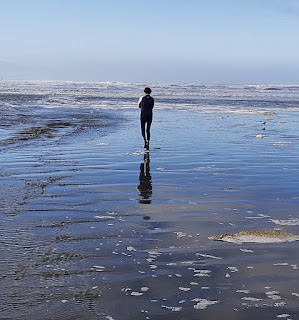I have started a training to work on the climate crisis in conjunction with mindfulness and meditation. I am new to this approach but one of our assignments is to write up a bit of a bio related to our connection with the environment and our background and motivation about our connection to the nature and the environment we seek to protect. below is my initial view of this for myself.
Eco Bio
Mary Miller
January 2020
I grew up in a large family in Cleveland Ohio. We had each other and various neighbor kids to entertain ourselves and spent most of our time outdoors pursuing many physical and athletic endeavors with lots of adventures in the neighborhood and beyond, especially a large regional metro park – on foot or bicycle. We had a large yard for lots of games, plus a field behind our house where we spent much time exploring and creating worlds of our own. it was also easy to get to the local city-run playgrounds where there was a supervisor of sorts to organize games and team sports. We rode our bikes to a city pool early in the mornings in the summer for swim lessons; we packed a lunch and often stayed all day. I, and my sisters were very physically active and engaged in the early years of girls’ sports teams, pioneered in Cleveland by the Catholic Youth Organization spearheaded by my father, long before Title IX. I took part in any and all of these activities and generally was seen as what was then called a “tomboy”. I thought of it as a compliment and even a badge of honor. Our family vacations involved spending a week at a cottage on Lake Erie and pretty much spending all day in the lake and being outside. In my freshman year of college was the first Earth Day and our spring arts festival featured many wonderful activities and entertainers including the Grateful Dead, Hog Farmers and the Merry Pranksters, among others. During that time, we were organized to clean up dumps and abandoned lots to create “People’s Parks”. I was totally affected by all of this new input having recently left the cocoon of an all-girl Catholic high school. Also, early in college I began to learn about hiking backpacking and in my sophomore year I went on my first backpacking trip in the Great Smokey Mountains during Spring break. This trip was somewhat epic for the snow and rain, losing the tent, bushwhacking up the side of the mountain to a ridge due to creek flooding, and more. But, thus began my love affair with the wilderness, and spending as much time as possible backpacking, river rafting, bicycling, cross country skiing, etc – pursuing any way to be out in it. After many trips to Colorado and Washington State to pursue my passion outdoors I eventually moved to Seattle to be closer to the mountains and the big water, and attend graduate school. Over my nearly 40 years here I have been so lucky to travel and explore throughout the PNW. Over the years, I have also been lucky to join friends in the Arctic National Wildlife Refuge and other parts of the Alaska wilderness; the Grand Canyon to hike and also raft the Colorado River several times; hike and raft in many other parts of the Southwest; raft the rivers in Idaho and Washington; and also explore some of the stunning parts of South Africa. Wherever I travel, I seek to find the wilderness. It is where I find a connection with my heart, my spirit. I feel the power of the universe in a way that does not seem tangible living in the city. I know that for myself and other good friends with whom I travel and explore to these beautiful areas, it seems that this gift we have enjoyed for pretty much our entire adult lives is at risk and may not be there for future generations. It makes me feel urgent to continue to experience these places while I am able and to do what I can to contribute in some small way to saving them. I am incredibly grateful to have been introduced to the wonders of this planet long ago and that I have had the physical ability to sustain my travels that fill my body and soul.
Wilderness
Wilderness is…circular, unpredictable, moving and changing. Nature weaves around itself in an unending breath of life….That which is truly wild spills over the edges – onto our kitchen floors, into our love lives, through the sidewalk cracks, and in the form of dandelions and emotional outbursts. One way to return to a lifestyle that is more organic and harmonious with the whole of nature is to get outside more often, to get out of the squareness of your comfortable home and routines, to let the unpredictability of wildness touch the soulful longings within yourself. Wilderness is innate to who we are. You do not have to go far to find wildness, only as far as your own beating heart and the joy you find in life.
~ Cass Adams, Soul Unearthed













































